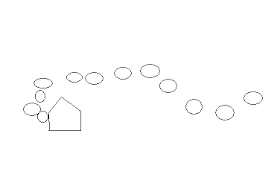 Meanwhile, new disciplines and new technologies were creating new ways to examine the past. Demography, climatology, epidemiology, economics, botany, and palynology (pollen analysis); molecular and evolutionary biology; carbon-14 dating, ice-core sampling, satellite photography, and soil assays; genetic microsatellite analysis and virtual 3-D fly-throughs—a torrent of novel perspectives and techniques cascaded into use. And when these were employed, the idea that the only human occupants of one-third of the earth’s surface had changed little for thousands of years began to seem implausible. To be sure, some researchers have vigorously attacked the new findings as wild exaggerations. (“We have simply replaced the old myth [of untouched wilderness] with a new one,” scoffed geographer Thomas Vale, “the myth of the humanized landscape.”) But after several decades of discovery and debate, a new picture of the Americas and their original inhabitants is emerging.
Meanwhile, new disciplines and new technologies were creating new ways to examine the past. Demography, climatology, epidemiology, economics, botany, and palynology (pollen analysis); molecular and evolutionary biology; carbon-14 dating, ice-core sampling, satellite photography, and soil assays; genetic microsatellite analysis and virtual 3-D fly-throughs—a torrent of novel perspectives and techniques cascaded into use. And when these were employed, the idea that the only human occupants of one-third of the earth’s surface had changed little for thousands of years began to seem implausible. To be sure, some researchers have vigorously attacked the new findings as wild exaggerations. (“We have simply replaced the old myth [of untouched wilderness] with a new one,” scoffed geographer Thomas Vale, “the myth of the humanized landscape.”) But after several decades of discovery and debate, a new picture of the Americas and their original inhabitants is emerging. Advertisements still celebrate nomadic, ecologically pure Indians on horseback chasing bison in the Great Plains of North America, but at the time of Columbus the great majority of Native Americans could be found south of the Río Grande. They were not nomadic, but built up and lived in some of the world’s biggest and most opulent cities. Far from being dependent on big-game hunting, most Indians lived on farms. Others subsisted on fish and shellfish. As for the horses, they were from Europe; except for llamas in the Andes, the Western Hemisphere had no beasts of burden. In other words, the Americas were immeasurably busier, more diverse, and more populous than researchers had previously imagined.
And older, too.
Excerpt from Charles Mann' s 1491

















































